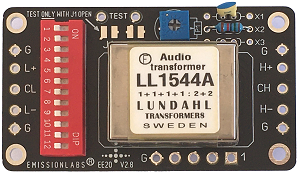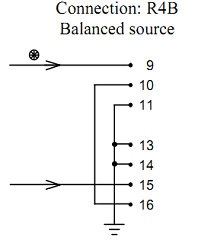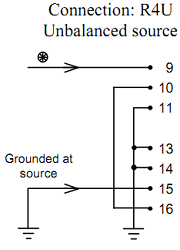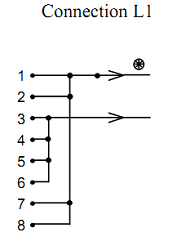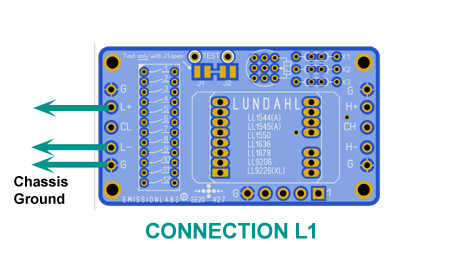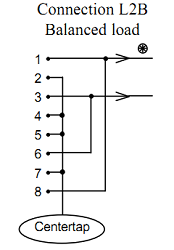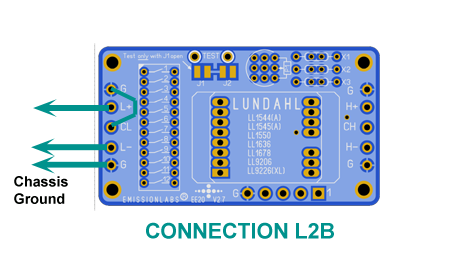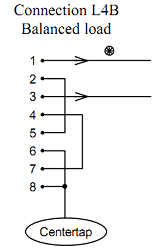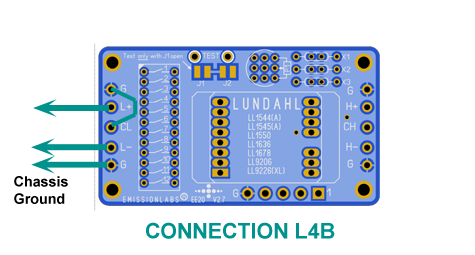Since 1993 Copyright Notice
Electron Engine ™
Printed Circuit Boards by Emissionlabs
EEE20 Multi Purpose Board. Version 2.9
- Moving Coil, Applications.
- Moving Coil, Tuning
 Audio Board, Applications (You are here)
Audio Board, Applications (You are here)- Audio Board, Tuning
Audio Board Applications - CONTENTS:
1. How to use EE20 as Audio Input board (NOT Phono)
2.1 Complete Configurations "ALT" Method Choice
2.2 Combine Input + Output configurations yourself
3. Phase Splitter Applications
4.4. XLR input + balanced RCA input simultaneously
4.6 Balanced_Input_with_center_tap
1. How to use EE20 as Audio Input board? (Not moving coil)
IMPORTANT: Lundahl uses two approaches, to use the LL1544A + LL1545A + LL1550. It comes down to the same, but there are two ways to achieve it. Some data sheets describe the complete configuration, with Input and Output in one drawing ("ALT" System). Some other data sheets give separate input and output circuits, and you can make your own combinations.
- Use COMPLETE CONFIGURATIONS for input and output all together. The so called "ALT" schematics. Like in the data sheets. Described in 2.1 below here. We recommend this way.
- Another method is, a SEPARATE Output schematic, and a SEPARATE Input Schematic. This is for specialists. The result is the same of course, but you must make the combinations yourself, and you need to understand yourself how that works. The EE20 can do it both ways. (SEE LUNDAHL DATA SHEET FOR THIS). Described in 2.2 below here.
2.1 COMPLETE CONFIGURATIONS
This board can be used stand alone, or with the external switch. (See below)
- Choose the intended gain/attenuation factor from Column 3
- Choose the transformer in Col. 1 from the table below. Note for this, 1544A/LL1545A differ in core material, and LL1550 differs in windings ratio. LL1550 is a rarely used, low impedance transformer. LL1544A is has amorphous core, LL1545A is all mu-metal. .
STAND ALONE: Use Piano Switch Options from Col. 8
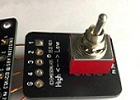 With External Switch EE22 attached: Use Piano Switch Options from Col. 9
With External Switch EE22 attached: Use Piano Switch Options from Col. 9
The switch will move the gain up or down the selection one row. This is called "Low" and "High" in Col. 9.
In addition there is also the possibility to use the transformer reversed, so exchange output an input. This is shown in another table which you find much lower in this page, and this would be needed for attenuating inputs.(Section 4.5 "attenuating inputs")
This is according to the data sheet: LL1545A-ALT
| Input is at L and L+, Output is at H- and H+ |
| Center Tap is not possible with any configuration, for instance when all windings are in parallel, there can be no center tap. With Splitter configuration, gain selection is not impossible, but not every option. |
| Though we write below "Board Gain" the Piano Switch has settings for small attenuation. |
| to the top | ||||||||
Col. 1 |
Col.2 |
Col. 3 |
Col. 4 |
Col. 5 |
Col. 6 |
Col. 7 |
Col. 8 |
Col. 9 |
Trans-former |
Line nr |
Board Gain |
Note |
Possible Use |
EE20 Board Input impedance |
Tuning options |
Use only EE20 |
|
#1 |
0.5x |
New! Possible with EE20 board
|
Factor 4, Impedance lowering, or attenuator. |
47k (*1) |
Close J1 to activate the tuning |
Set Switch:
1, 3, 7, 9, 11
Gain= 0,5x |
Set Switch: 7, 9, 11 Low Gain= 0.5x High Gain =1x |
|
#2 |
0.75x |
New! Possible with EE20 board
|
Factor 1.8, Impedance lowering, or attenuator. |
47k (*1) |
Close J1 to activate the tuning |
Set Switch:
1, 3, 5, 7, 8, 11 |
Set Switch: 5, 7, 8, 11 Low Gain=0.75 High Gain=1.5 |
|
#3 |
1x |
Lundahl Alt A,
for RCA, or other unbalanced input. |
10k / 10k |
47k (*1) |
Remove X1 Damping Network: 6k7at X3, and 470pF at X2. Close J1 to activate the tuning |
Set Switch:
Gain= 1x |
Set Switch: 7, 9, 11 Low Gain =0.5x High Gain=1x |
|
#4 |
1x |
Lundahl Alt A Center Tapped, for XLR or other balanced input. |
10k / 10k |
47k (*1) |
Remove X1 Damping Network: 6k7at X3, and 470pF at X2. Close J1 to activate the tuning
|
Set Switch: Gain= 1x |
Set Switch: 7, 9, 11 Low Gain = 0.5x High Gain= 1x |
|
#5 |
1x |
Lundahl Alt A Center Tapped, for XLR or other balanced input. With SPLITTER Output, to drive Push Pull tube stage. |
10k / 10k *2) |
47k (*1) |
Remove X1 |
Set Switch: XLR1=CL, XLR2=L+, XLR3=L1. Out1=H+, Out2=H1, Gain= 1x |
Set Switch: |
|
#6 |
1x |
Lundahl Alt B |
600R / 600R *3) |
600Ohms |
Remove X1 |
Set Switch: Gain= 1x |
Set Switch: |
|
#7 |
1.5x |
New! Possible with EE20 board
|
21k (*1) |
Remove X1 |
Set Switch: Gain= 1.5x |
Set Switch: Low Gain = 0,75x |
||
#8 |
2x |
Lundahl Alt C Most recommended |
High Signal |
12k (*1) |
Remove X1 |
Set Switch: Gain= 2x |
Set Switch: Low Gain = 1x |
|
#9 |
2x |
Lundahl Alt D Only for low impedance Source |
Normal Signal |
12k (*1) |
Remove X1 |
Set Switch: Gain= 2x |
Set Switch: Low Gain = 2x |
|
#10 |
4x |
Lundahl Alt E |
3k (*1) |
Remove X1 |
Set Switch: |
Set Switch: 4, 5, 6, 8, 10, 12 Low Gain = 2x High Gain= 4x |
||
#11 |
1x |
New! Possible with EE20 board
|
47k (*1) |
Remove X1 |
Set Switch: 1, 3, 7, 9, 11 |
Set Switch: 7, 9, 11 Low Gain= 1x High Gain =2x |
||
#12 |
1.5x |
New! Possible with EE20 board
|
20k (*1) |
Remove X1 |
Set Switch: Gain= 1.5x |
Set Switch: |
||
#13 |
2x |
Lundahl Alt A |
High Signal |
12k (*1) |
Remove X1 |
Set Switch: Gain= 2x |
Set Switch: 7, 9, 11 Low Gain =1x High Gain=2x |
|
#14 |
2x |
Lundahl Alt B |
Normal Signal |
12k (*1) |
Remove X1 |
Set Switch: Gain= 2x |
Set Switch: 5, 7, 8, 10, 12 Low Gain= 2x High Gain= 4x |
|
#15 |
3x |
New! Possible with EE20 board
|
5k2 (*1) |
Remove X1 |
Set Switch:
2, 5, 7, 8, 11
|
Set Switch: Low Gain = 1,5x |
||
#16 |
4x |
Lundahl Alt C |
High Signal |
3k (*1) |
Remove X1 |
Set Switch: Gain= 4x |
Set Switch: Low Gain = 2x |
|
#17 |
4x |
Lundahl Alt D |
Normal Signal |
3k (*1) |
Remove X1 |
Set Switch: Gain= 4x |
Set Switch: Low Gain = 4x |
|
#18 |
8x |
Lundahl Alt E |
734 Ohms (*1) |
Remove X1 |
Set Switch: Gain= 8x |
Set Switch: 4, 5, 6, 8, 10, 12 Low Gain = 4x High Gain= 8x |
||
*1) Output of board loaded with 47k amplifier input. *2) This 1:1 configuration transfers high impedance 1:1. So 10k in = 10k out, or 47k in = 47k out. Etc. *3) This 1:1 configuration transfers low impedance 1:1. So 600R in = 600R out, or 1k in = 1k out. Etc. *4) trying to get gain with a high impedance splitter is not recommended. |
||||||||
2.2 Combine Input + Output configurations yourself
This is according to the data sheet: LL1545A.
Note this:
This data sheet has only REVERSED, so ATTENUATING Applications. It means H+ and H- is the INPUT. Lundahl did it this way, we just replicate this here.
Input Applications |
||
Scheme |
Set Switches + Connections |
Remarks |
|
Set: Switch 2 Input H+, H- |
If XLR is used, connect XLR shield to chassis ground of the receiver. |
|
Set: Switch 2 Input H+, H- |
Though the source is unbalanced indeed, Lundahl uses a 'ground lifted' input. For a normal, grounded RCA input, connect H+ to ground with a wire link. |
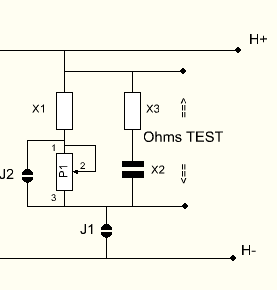 |
Correction network is connected from H+ to H-, and can be used to generate a defined input impedance.
|
|
Output Applications |
||
Scheme |
Set Switches |
Connections |
|
4, 5, 6, 8, 10, 12 All windings in parallel. |
For floating XLR, connect XLR1=G, XLR2=L+, XLR3=L1 For RCA connect L- with wire bridge to G. L+ becomes RCA out. All "G" connections are the same, at least one of them should be grounded. |
|
4, 6, 9, 11 2x Series, 2x parallel. |
For XLR connect: XLR1=G, XLR2=L+, XLR3=L1 All "G" connections are the same, at least one of them should be grounded. |
|
7, 9, 11 All windings in series. |
For XLR connect: XLR1=G, XLR2=L+, XLR3=L1 All "G" connections are the same, at least one of them should be grounded. |
3. Phase Splitter Applications
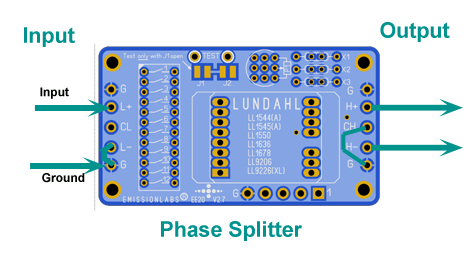 A phase splitter transformer is an ideal application when using tubes. For driving a Push Pull stage, we need perfect symmetry. Otherwise this will add distortion if the signal is higher. (Which is just the moment where we do NOT want to add distortion...)
A phase splitter transformer is an ideal application when using tubes. For driving a Push Pull stage, we need perfect symmetry. Otherwise this will add distortion if the signal is higher. (Which is just the moment where we do NOT want to add distortion...)
However with two drive tubes that is hard, because it needs two identical tubes, some call that a balanced tube. Read more about it here.
Even when do do get balanced tubes, they do not age the same way. So 1000 hours later, the balanced tubes are unbalanced again. This often ends up with a symmetry potentiometer, which needs to be adjusted by oscilloscope, as the tubes age, and sure at tube exchange. This is quite an unfavorable adjustment point. Yet for cost saving it is done. A half way good solution is to use a totem pole circuit, which can work without adjustment indeed, but such a circuit has different output impedance of both outputs, is also not free of aging, and it adds some to distortion at high signal. Moreover, if done with double triodes, the different heater-cathode potential of the channels stresses the tubes very much, and you may run into hum problems, blaming the tubes for this, but in fact maximum heater-cathode voltage is exceeded, or it comes just too close. From selling tubes, we can say, a totem pole is the #1 a trouble maker for crack and pop noise, specially with E88CC, for reasons explained here.
The typical Lundahl phase splitting capable transformers have what is called symmetrical windings, so there is no inductive or capacitive difference. These are from this series: LL1544 and LL1545. LL1550 is also possible. No microphonics, no aging, no adjustment, no hum, and no noise, and more cost effective too. A pair of NOS E88CC costs more.
Note, a 1:1 phase splitter gives 2x the load on the driver tube, and a 1: 2 splitter gives even 8x the load. So gain should be used with care, and needs a low impedance drive tube. So design with 1:1 and when you driver tube can take some gain, you can set the gain of the board higher.
If used as a splitter, in forward application, there are some more considerations:
- EE22 GAIN SWITCH Board can NOT be attached. The gain is always fixed (by the Piano Switch)
- For an unsymmetrical input, any gain can be chosen, but high frequency response is best at 1:1.
- The correction network is not used, so the solder Jumpers J1 and J2 are left open.
- For a splitter with external signal source, an XLR Input may be used, with any gain you choose. This is provided the XLR signal is floating, the ground is only used for shielding, and drive impedance is low.
- A symmetrical input to ground however, which is NOT floating (Such es when connected to a PP circuit) can only be used with gain 1:1 or 1:2.
4.1 Unbalanced RCA Input
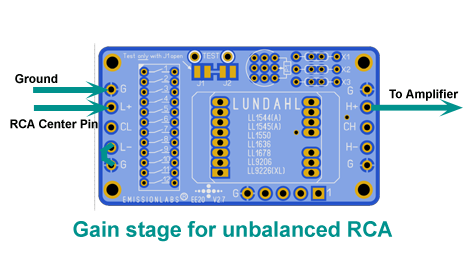
This is how to create a simple gain stage inside an amplifier. Select any ratio from 0.5x (Attenuating) to 4x (Gain), by simply set the Piano switch by the table. This is using LL1544, LL1545, which are probably the most convenient to use, because these will also ATTENUATE if needed (So gain = 0.5x) if needed.
With LL1550, Gain can be selected from 1x to 8x. Whereas input impedance becomes quite low at 8x gain, impedance will be the same as with LL1544 or LL1545, if the same gain is chosen.
Moreover, by adding the Optional EE22 Switch Board in addition, the amplifier becomes a High-Low Sensitivity input.
4.2 Balanced RCA Input to unbalanced amplifier input
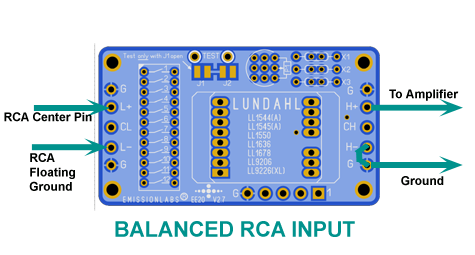 Most RCA connectors are grounded to the chassis by default. To convert this to a balanced RCA input, it should be replaced by an isolated ground type. Sometimes such an isolated ground RCA connector was already used, and it's ground was connected to the chassis with a wire piece. In that case, just cut this wire piece off. The center of the RCA cable is connected to X+. The shield is connected to X. Already now the input is balanced, even though it has RCA connectors.
Most RCA connectors are grounded to the chassis by default. To convert this to a balanced RCA input, it should be replaced by an isolated ground type. Sometimes such an isolated ground RCA connector was already used, and it's ground was connected to the chassis with a wire piece. In that case, just cut this wire piece off. The center of the RCA cable is connected to X+. The shield is connected to X. Already now the input is balanced, even though it has RCA connectors.
4.3 XLR input
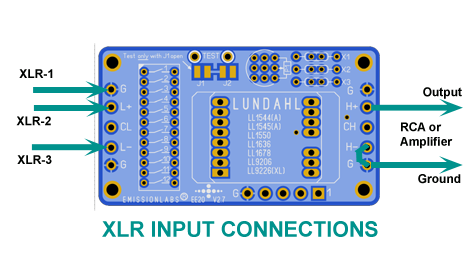 We don't want to mention names here, but some amplifiers have fake XLR inputs. This is really FAKE as can be. These are simply wired internally to an unbalanced input. So the amplifier already has all of the hardware, just the transformer was not installed. In this case, using the EE20 board is a VERY GOOD idea.
We don't want to mention names here, but some amplifiers have fake XLR inputs. This is really FAKE as can be. These are simply wired internally to an unbalanced input. So the amplifier already has all of the hardware, just the transformer was not installed. In this case, using the EE20 board is a VERY GOOD idea.
If you have a FLOATING sender, this a bit unusual, but it may be. On that case, it may be a good idea, to ground the CL connected with a wire link to G. This is only possible for switch combinations from the table, which have switch #7 is closed. (In any other combination this will not work, and cause a short, yet you will see, these are still many possibilities)
4.4 XLR input + balanced RCA input simultaneously
This is a really interesting option, since the only investment is the extra connector! Simply wire an RCA and XLR connector simultaneously, like in the above diagrams. When done, just use either the XLR, or the RCA, as you like. What we achieve here: The RCA input will still be truly balanced! Using fully the shielded properties of these transformers. Yet it stays fully compatible to any other RCA connected amplifier, no matter if it is a balanced or unbalanced type.
4.5 Attenuating stage
Do you have "too much gain in the chain". Is your pre-amplifier so "good" it works only on specially selected tubes for low microphonics? Then it is a frustrating cure, to work with highly selected tubes for ever. You need to step over the fixed idea, that if tubes appear microphonic in YOUR amplifier, the ONLY explanation is "the tube". Even when the problem is less with highly selected tubes, this proves only your amplifier is not capable of using normal tubes. So, what is the explanation for this?
Many times, the power amplifier or the pre amplifier have far more gain as needed. Not a few percent more, but a multiple. This may seem unimportant, and no so extremely visible, because the volume control is logarithmic anyway. But, this is a chain, and the total gains brutally sums up. Actually, total gain is a multiplication.
The #1 misunderstand of pre amplifier builders is always, these devices "must amplify" the signal. Which is wrong! They should lower the impedance, and if possible allow balanced inputs or outputs, to cut the ground loop. If so, then we talk about a problem solver. If neither inputs or outputs are balanced, and at output impedance is not lower than the input impedance, we talk about a problem generator with a volume control on it.
What caused the problem. First, the volume control has to be used only at the first beginning part of it, and no convenient use us possible any more. Second, there will be hum, microphonics, and noise added to the output signal, seemingly related to the pre amplifier tubes. However all of these noise effects are in fact amplified by the power amplifier, far too much without need. So what will the user do? Set the volume control of the pre amplifier even lower, but this will NOT remove the microphonics. Only remove the volume. The result is too much microphonics.
How to cure this? If the input signal of the power amplifier is attenuated, it should be clear, all those unwanted microphonics coming from the pre amplifier, will be attenuated as well. So there is a great reduction of this unwanted noise signals. Of course, now also the sound signal will be attenuated, but that is not problem because we started by saying we have to much signal anyway. So the loss of volume, can just be corrected by setting the volume higher. The effect of this is an amazing loss of microphonics .
- Using LL1544A / LL1545A reversed, give attenuation of 4x, 2x, 1.5x, 1x, 0.75x or 0.5x (The last two options are in fact "gain"). All if this by just set the piano switch by the table.
- Using LL1550A reversed, gives attenuation of 8x. 4x, 3x, 2x, 1x.
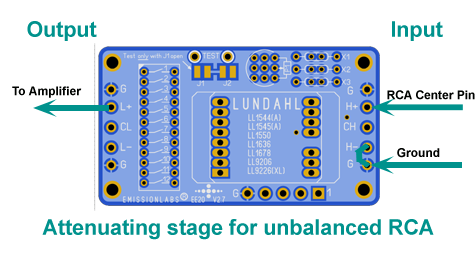 This schematic is R2U and R4U from the data sheet at the Input side. At the output side the "L" Variations can be chosen by the Piano switch. The choice between R2U and R4U is either done by the external switch board, to achieve (external) switchable attenuation, or can be done without external switch board, and set it via the Piano Switch to R2U or R4U.
This schematic is R2U and R4U from the data sheet at the Input side. At the output side the "L" Variations can be chosen by the Piano switch. The choice between R2U and R4U is either done by the external switch board, to achieve (external) switchable attenuation, or can be done without external switch board, and set it via the Piano Switch to R2U or R4U.
4.6 Balanced input with center tap.
For all those applications from the table, where switch #7 is closed ("On"), a balanced input with grounded center tap can be created. For this, the CL connection is connected to G with a wire link. L+ and L- become the inputs. This would be useful for instance for a balanced amplifier, and LL1544/1545 is the driver transformer for the output stage. Note, this doubles the gain, because what was 0....+2Volt before, becomes now -1...0....+1Volt.
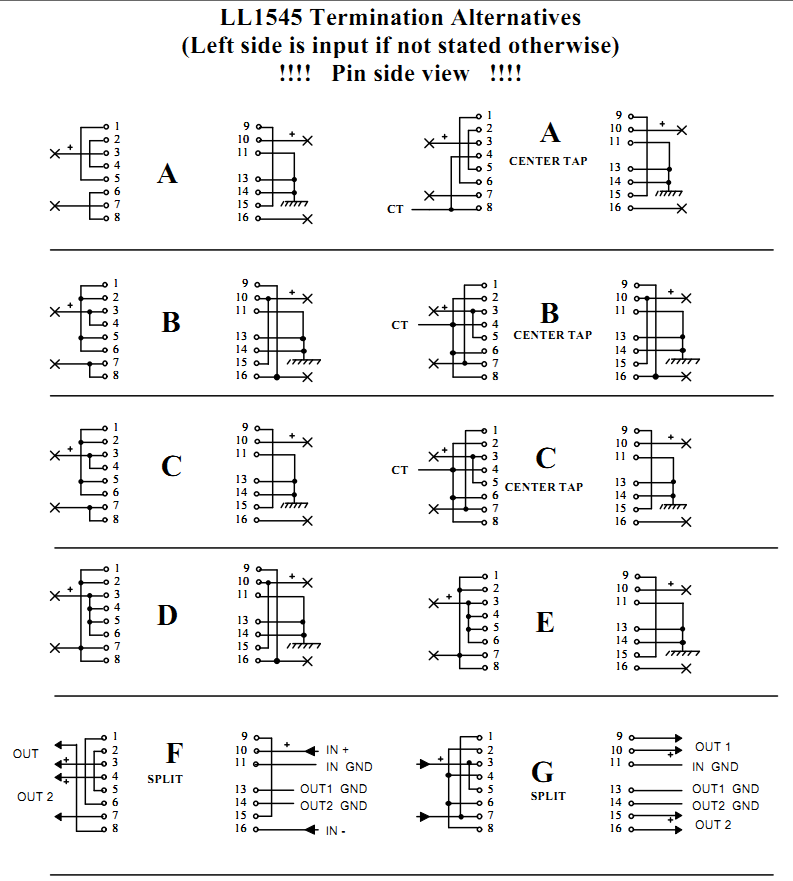
NOTES
The notes were put here, in order not to make the text above too long, to "thready" but these things ARE important.
Balanced tubes. With two drive tubes it is hard to drive a balanced circuit. It needs two FULLY identical tubes, or you introduce distortion. If those tubes are in one bulb, some call that a balanced tube. This is of course not possible to achieve with tubes, which were not produced "unbalanced" to begin with. Just the problem is, we can not get the tubes out of the bulb, to balance them for you. This is a little bit the same story, and every time we tell it, everybody is very surprized, but no, of course not, we can not select balanced tubes from a lot of tubes which is made unbalanced. Tubes which are MADE balanced is the only type suited for this. And these are not many types, and they are always expensive, for good reasons of course. For instance E88CC (6922) is the BALANCED version of ECC88 (6DJ8). But to be balanced, they must be real NOS. New production is fake. (yes!) Meaning they write E88CC on it, and present you the data sheet of an UNBALANCED version, and sell of course unbalanced tubes as well. To make it crazier as it already is, they charge you to select "so called "balances tubes out of such a lot, which doesn't contain such.
